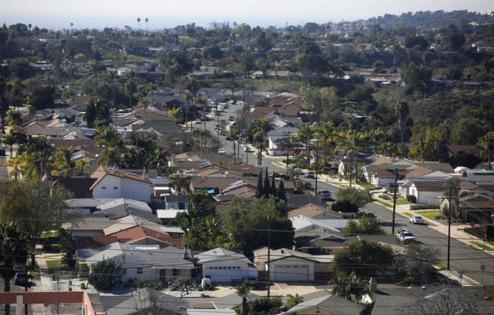Legal challenges to housing development aren't new to San Diego. But the group behind this one is
Published in Home and Consumer News
SAN DIEGO — A proposed 224-unit housing development that’s been called an ideal way to add mid-rise homes to mostly single-family neighborhoods is facing a new hurdle: a lawsuit over its potential impact on traffic and wildfire risk.
The project has been called ideal by city officials because it’s proposed for the edge of an existing shopping center in Clairemont, allowing that community to add denser housing without major changes to its single-family areas.
But a nonprofit called Supporters Alliance for Environmental Responsibility has filed a lawsuit seeking to overturn the City Council’s Nov. 19 approval of the five-story project.
The lawsuit argues the city and the developer, Kleege Enterprises, failed to adequately study the project’s potential impacts on the surrounding environment, including traffic and wildfire risk.
The nonprofit, which goes by the acronym SAFER, is a relatively new player on San Diego’s housing scene. SAFER has legally challenged several high-profile projects in Los Angeles and Long Beach, but its only previous San Diego lawsuit was settled quietly.
That lawsuit challenged the Costa Azul mixed-use project in Carmel Valley.
SAFER is funded by the Southern California District Council of Laborers, a group of construction unions.
Critics say groups like SAFER are abusing the state’s complex environmental law, the California Environmental Quality Act, to block projects or extract concessions from developers that make housing harder to build.
Construction unions often threaten CEQA lawsuits while negotiating details of a project with a developer, such as what percentage of the workers on the project will be unionized.
Richard Drury, whose Oakland law firm represents SAFER, stressed Wednesday that the group is an independent nonprofit, despite its union funding. He said the union and SAFER have overlapping membership.
He said CEQA does not have to be an obstacle to projects.
“CEQA, if properly used, is not about blocking projects,” Drury said.
The project, on Clairemont Drive on the back side of of the Clairemont Village shopping plaza, is in a location that falls within the city’s highest-severity zone for wildfire hazards, Drury noted. But most of the city falls within that “very high” severity zone.
“This could be a good project” if the city and the developer agree to additional mitigation measures, Drury said.
A spokesperson for City Attorney Heather Ferbert said the city can’t comment on the litigation, which was filed in late December — five weeks after the council’s approval of the project.
The developer, Bruce Kleege, did not return a phone call Wednesday.
Superior Court Judge James Mangione hasn’t scheduled any hearings yet in the case.
When the council approved the project in November, Councilmember Jennifer Campbell praised it.
“There was a huge space there that was like a parking lot, but nobody ever parked in it — so it was just empty blacktop of several acres,” said Campbell, whose district includes Clairemont. “So the owner of the shopping center who owns the land decided to build an apartment building, because we need housing in our city.”
City officials had such projects in mind in 2020 when they updated the growth blueprint for Clairemont, with the goal of simultaneously preserving community character and helping to solve the city’s housing crisis.
Nearly all the new housing in the updated blueprint is along a new trolley line or existing commercial corridors in the mostly suburban community. The proposed Clairemont Village project is a mile from the Clairemont Drive trolley station.
The new blueprint focused on transforming the neighborhood’s sprawling, one-story shopping plazas into mixed-use community centers with taller buildings and housing.
The project would include a club area, two lounges, a pool and a fitness center. Of the 224 units, 23 would have rent restrictions and be reserved for low-income residents.
Many nearby residents complained about the height of the project, which will be between 65 feet and 85 feet. But the developer noted that there are other mid-rise and high-rise buildings nearby, including a 14-story project for senior housing across the street.
©2025 The San Diego Union-Tribune. Visit sandiegouniontribune.com. Distributed by Tribune Content Agency, LLC.








Comments